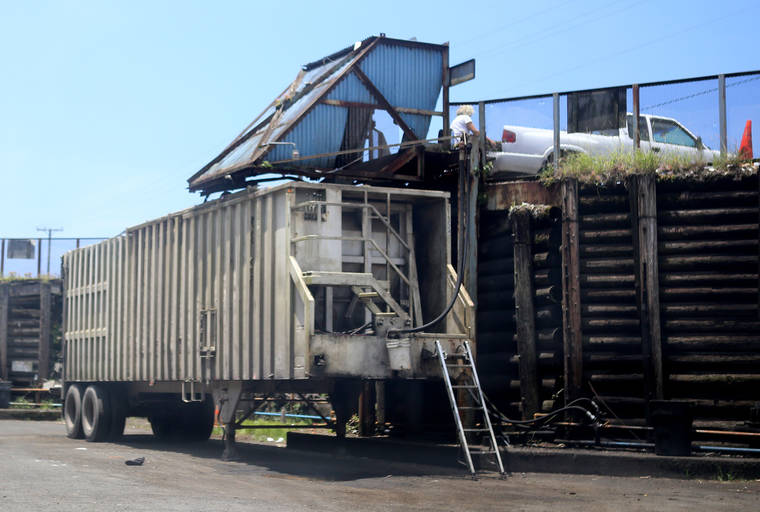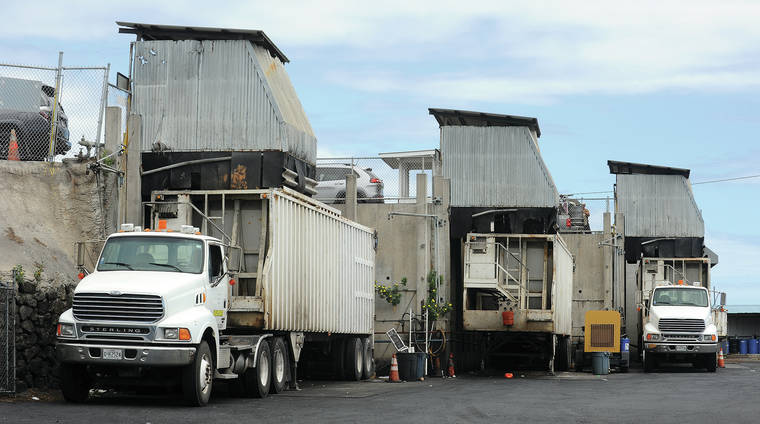Would you be willing to pay a few extra cents — or a few extra dollars — toward disposing of the products you purchase and the packaging they come in?
That’s the concept behind extended producer responsibility, or EPR, an international effort to get producers to shoulder more of the disposal burden that currently falls to government and its taxpayers.
The practice, as recently signed into law in Maine, charges producers a fee for packaging or products with high disposal costs such as electronics, batteries, paint and medications. The money goes to a fund that governments can tap into for waste disposal. Oregon is advancing a similar law.
The extra fees are not only to help pay the disposal costs but also as an incentive for producers to reduce waste-stream impacts.
In some ways, an EPR program is similar to Hawaii’s HI-5 deposit program, where consumers pay 6 cents per beverage container at the store, with 5 cents refunded to them at certified recycling centers.
The HI-5 program is self-sufficient, Georjean Adams, chairwoman of the county’s Environmental Management Commission, said Wednesday. A charge on manufacturers of non HI-5 glass, in contrast, covers about half the disposal cost, she said. In that program, importers pay 1.5 cents per container to the state, which moves funds to the counties as grants for on-island recycling.
Big Island property owners pay most of the cost of waste disposal through property taxes. Adams said their share of the disposal cost is essentially determined by the value of their property, which has no relation to the amount of waste they generate.
Most residents otherwise pay no disposal fee at all, with waste of all kinds disposed of for free at the county transfer stations. Commercial haulers and disposers pay tipping fees of $114 per ton at the landfill, but the county pays contractor Waste Management Inc. $242 per ton to deal with it.
“There are some unfair subsidies going on relating to solid waste,” Adams said. “There’s no financial incentive to reduce waste generation.”
Other ideas discussed by the commission included increasing the tipping fee, imposing dedicated taxes for waste disposal, expanding curbside pickup and adding user fees such as the often suggested and just as often rejected pay-as-you-throw bag-tag program. A line-item on property tax statements showing the cost of waste disposal could be a way not to generate income but to educate people on the costs.
The user fee ideas have been politically unpopular and could be considered regressive as they cost proportionately more for low-income households. But they could drive home the cost of disposal, said Environmental Management Commissioner Jon Olson.
“If we collect the disposal fee at the point of purchase, this puts the consumer in the drivers seat. He knows what it costs,” Olson said. “I have no illusions. … It’s going to be a substantial challenge, but if we keep doing it the way we’re doing it, we’re going to go broke.”
Waste Management Director Ramzi Mansour said he met with the county Finance Department about a month ago with “the idea of entertaining the legality of setting a user fee.” He said the proposal has been forwarded to county Corporation Counsel.
The county is also contracting with a consultant to do a life cycle analysis of the county’s waste stream.
The option to increasing fees is cutting back on services, Mansour said. For example, hours and days the transfer stations are open could be cut back. Those using transfer stations are accustomed to expanded hours, while those on curbside pickup understand that one day a week is garbage day, he said.
In the end, “everything comes down to funding and staffing,” Mansour said.









